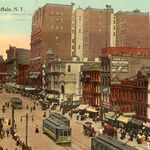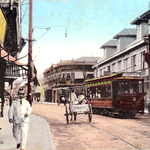For those unfamiliar with the history of Tel Aviv, many may be surprised to learn that Israel's second-largest city is home to the world's largest collection of Bauhaus architecture, with just over 4000 examples of the German-born architectural style to be found within the heart of the city centre. This edition of Cityscape will explore the German origins of Bauhaus, also known as The International Style, and how it came to be extraordinarily well-represented in one of Israel's largest cities, forming a major part of its urban fabric and architectural character.
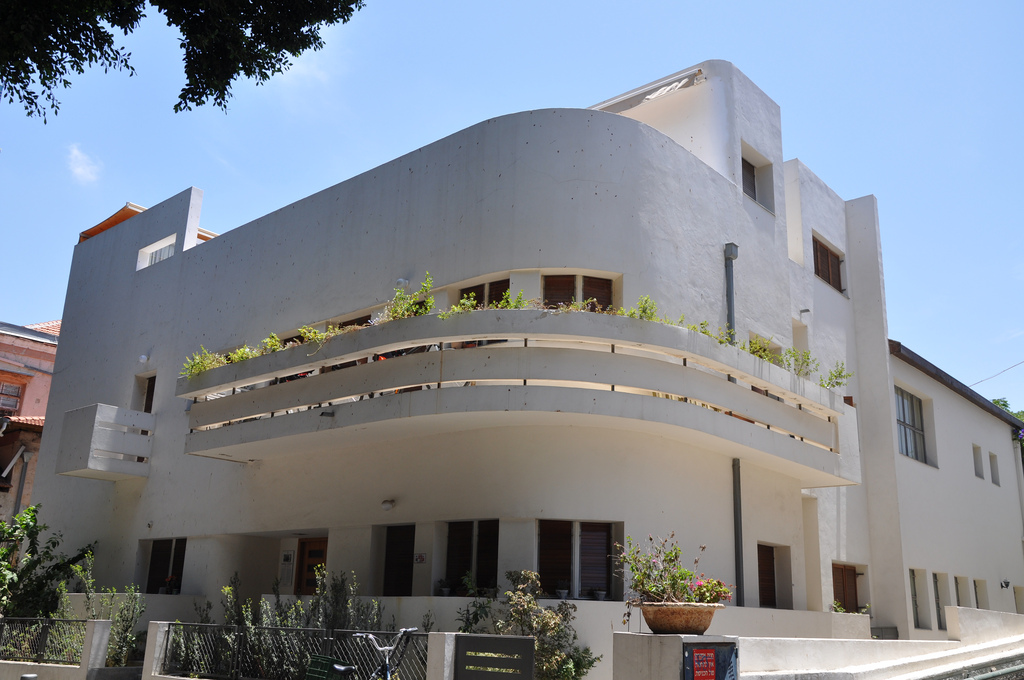 Soskin House, Tel Aviv, image by Flickr user jaime.silva via Creative Commons
Soskin House, Tel Aviv, image by Flickr user jaime.silva via Creative Commons
Following the defeat of Germany in the First World War, the creation of the Weimar Republic (1919-1933) brought about a brief period of cultural freedom and experimentation. Among many things, this was responsible for an explosion of new art, architecture, film, and music, the majority of which was centred in the cafes, nightclubs, and university campuses of Berlin and other urban centres across Germany. From an architectural standpoint, the development of what became known as Bauhaus ("Construction House," in English), was the product of a vision manifested by founder Walter Gropius (1883-1969) who was regarded as one of the fathers of modern architecture. His new style sought to bring all of the arts together via a single, unifying expression of the material world.
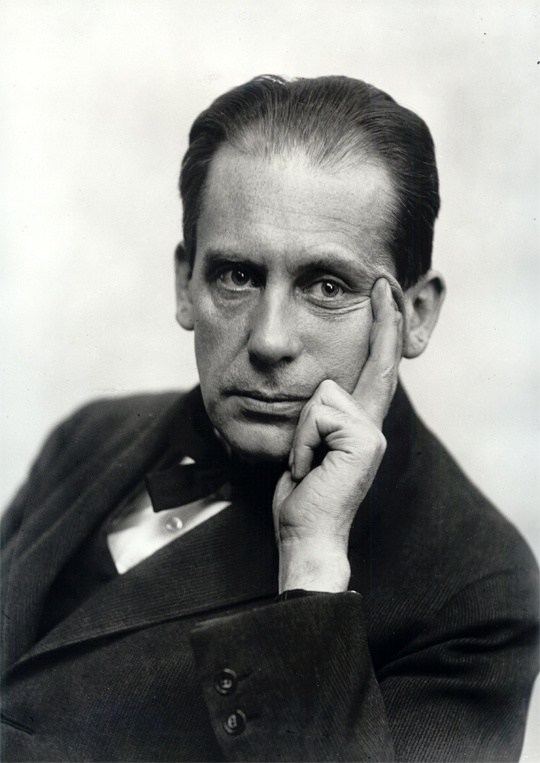 Walter Gropius, 1919, photographed by Louis Held, public domain image via Wikimedia Commons
Walter Gropius, 1919, photographed by Louis Held, public domain image via Wikimedia Commons
Known in German as Gesamtkunstwerk, or "total work of art," the concept was one which had been directly influenced by the previous generation of English Arts and Crafts architects. The Bauhaus School was a modernist reimagining of the nineteenth-century concept of complete design. Marked by an absence of decoration, Bauhaus was representative of the marriage of form and function, so stripping away any unnecessary details and extraneous ornamentation was believed to be the best way forward for the future of modern design.
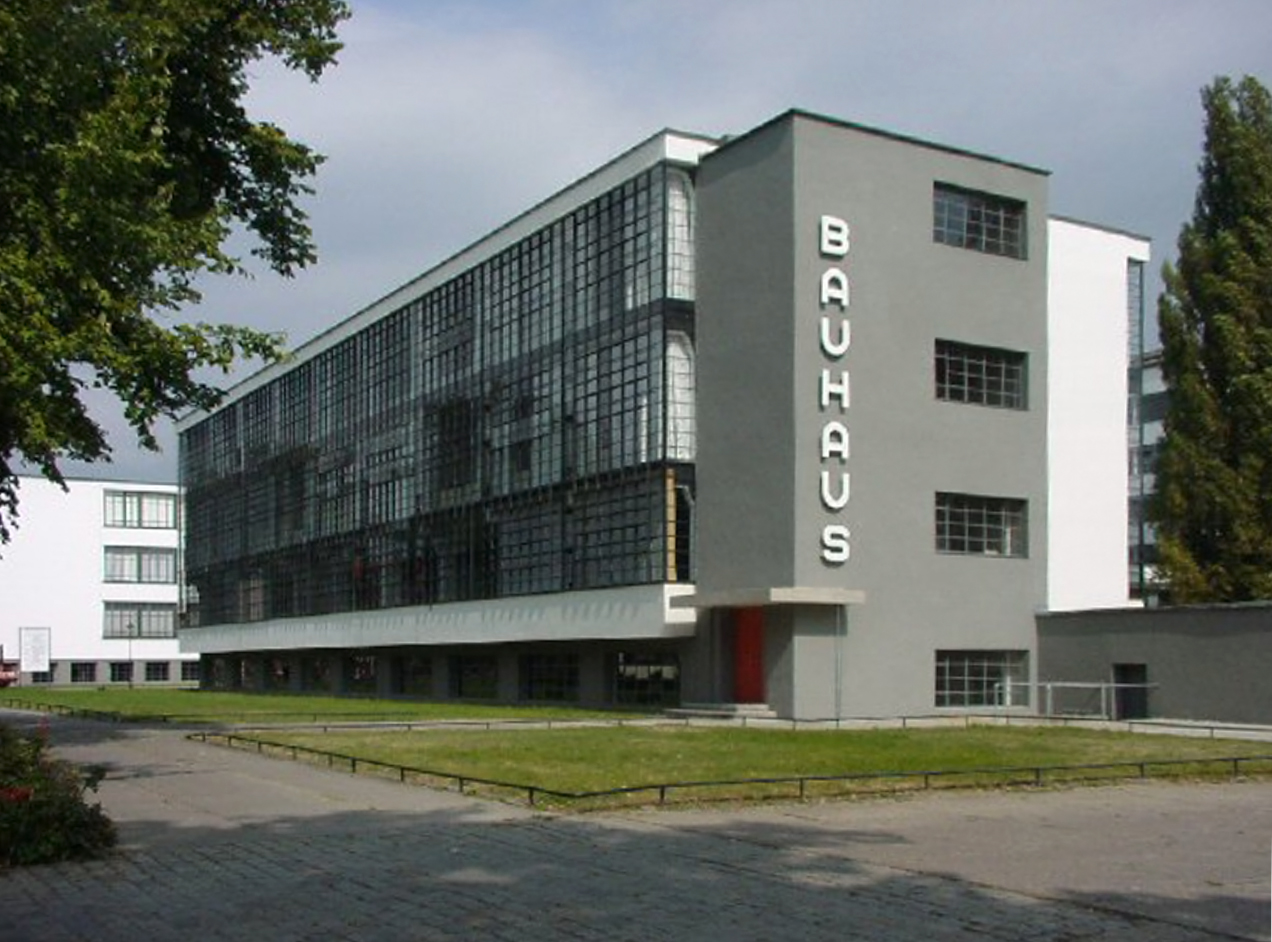 Bauhaus School (1925-26), by Walter Gropius, located in Dessau, Germany, public domain image via Wikimedia Commons
Bauhaus School (1925-26), by Walter Gropius, located in Dessau, Germany, public domain image via Wikimedia Commons
Throughout the 1920s and early 1930s, the development of a distinct "Bauhaus School" of architecture came into existence, with centres emerging in Weimar, Dessau, and Berlin. While similar in many respects to what became known as the "Chicago School of Architecture" at the turn of the last century, the Bauhaus School was at its base a much more philosophical undertaking, combining not only the exploration of new, often convention-challenging theories of modern art, architecture, and design, but looking as well into the more complex, socio-econimic, cultural, human impact of design upon the natural order of society. This latter point was explored in great detail by Viennese philosopher of mathematics, mind, and language, Ludwig Wittgenstein (1889-1951), designer of Haus Wittgenstein in Vienna, which was built over three years from 1925 and 1928 and survives today as arguably the purist manifestation of Bauhaus principles ever produced.
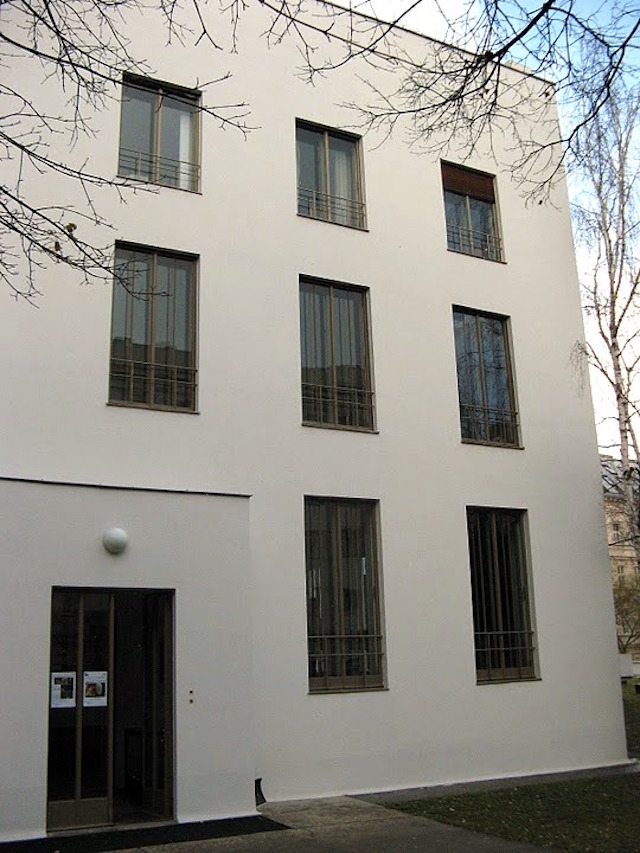 Haus Wittgenstein (1925-28), Ludwig Wittgenstein, Vienna, image by Mark H via Wikimedia Commons
Haus Wittgenstein (1925-28), Ludwig Wittgenstein, Vienna, image by Mark H via Wikimedia Commons
After the ascension of the Nationalist Socialist (Nazi) Party in 1933, Bauhaus quickly became a target of the new regime, vilified for what the Nazi leaders viewed as its representation of the "un-German" ideals of an elite, allegedly Jewish-centric, socialist subset of cosmopolitan modernists, whose ideas about art, architecture, and design were antithetical to the creation of the proud ultranationalist German State that was to define the Third Reich. Targeted for their work, an exodus of German intellectuals, many artists and architects among them, became synonymous with the time period between the Nazi's rise to power in 1933 and the outbreak of war in 1939. Of the Bauhaus-related contingent of architects who fled for greener pastures, Ludwig Mies van der Rohe was likely the most notable, emigrating to the United States where his impact upon the North American cityscape became a central pillar of the Second Chicago School of Architecture.
 S. R. Crown Hall, Illinois Institute of Technology, by Mies van der Rohe, image by Flickr user Joe Ravi via Creative Commons
S. R. Crown Hall, Illinois Institute of Technology, by Mies van der Rohe, image by Flickr user Joe Ravi via Creative Commons
While Mies van der Rohe and many others relocated to either the United States, Britain, or the Soviet Union, a strong contingent of German-Jewish architects sought refuge in what was then known as the British Mandate of Palestine (which became Israel in 1948), many choosing Tel Aviv as their new home. It was thus by a series of complex geopolitical events that upon the eve of one of the second world war, a major urban centre in the heart of what would soon become the State of Israel, would improbably find itself as the de facto epicentre of Bauhaus architecture, a movement synonymous with German modernism, and an exile of the Nazi regime.
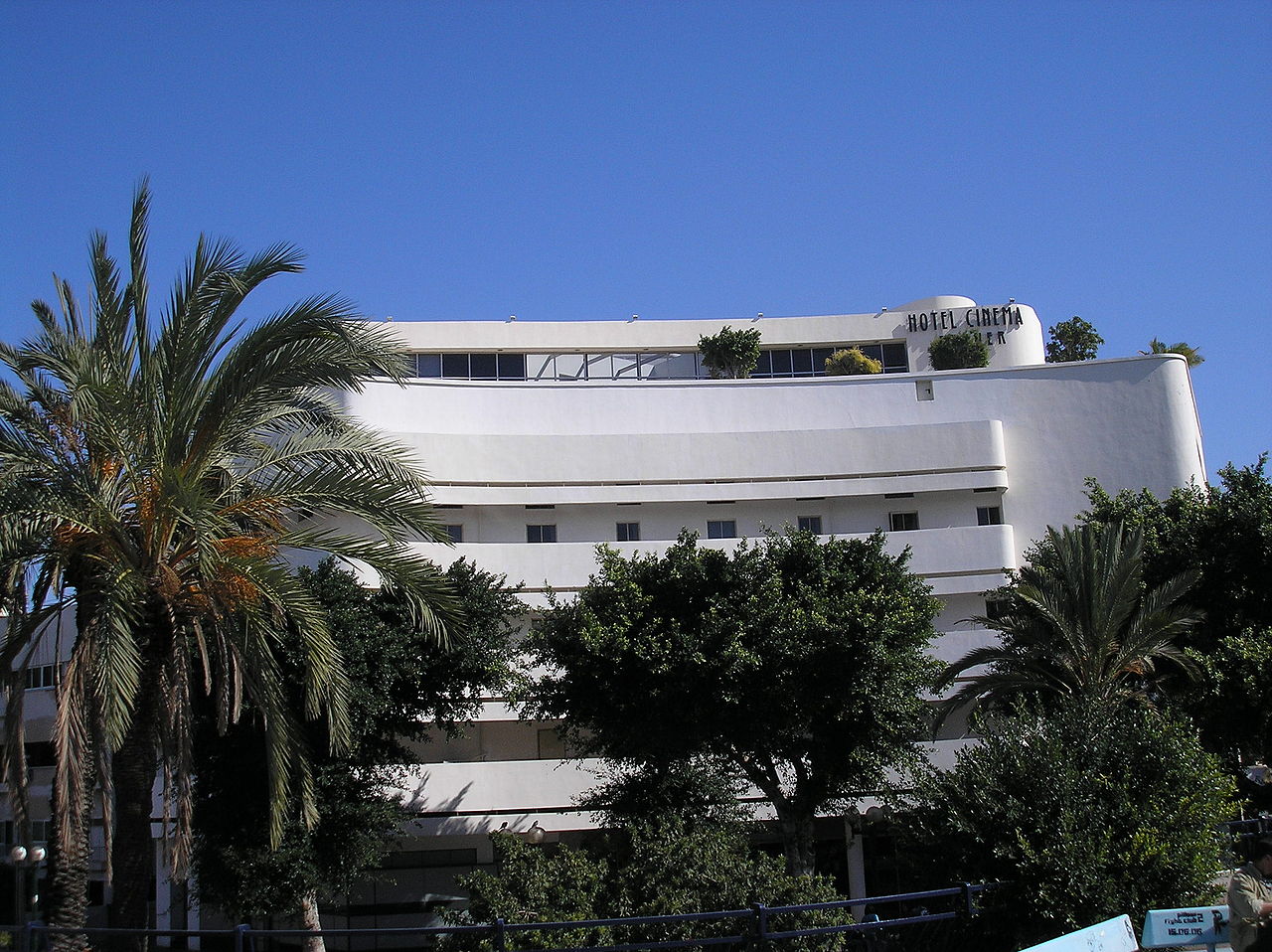 Hotel Cinema, Tel Aviv, image by deror avi via Wikimedia Commons
Hotel Cinema, Tel Aviv, image by deror avi via Wikimedia Commons
Planned as a Garden City in 1909, the evolution of Tel Aviv began in earnest following the First World War. Scottish urban planner Patrick Geddes was commissioned by Tel Aviv's first mayor, Meir Dizengoff, to oversee the project in 1925. From here, the arrival of several notable German-Jewish Bauhaus architects beginning in the early 1930s, including Arieh Sharon (1900-1984), started to redefine Geddes' original vision. While the original plans had not been beholden to any one architectural style or theme, the flood of Bauhaus exiles began to significantly reshape the city's development, bringing a decidedly modern urban flair to one of the most ancient sites of sustained human occupation in the Middle East.
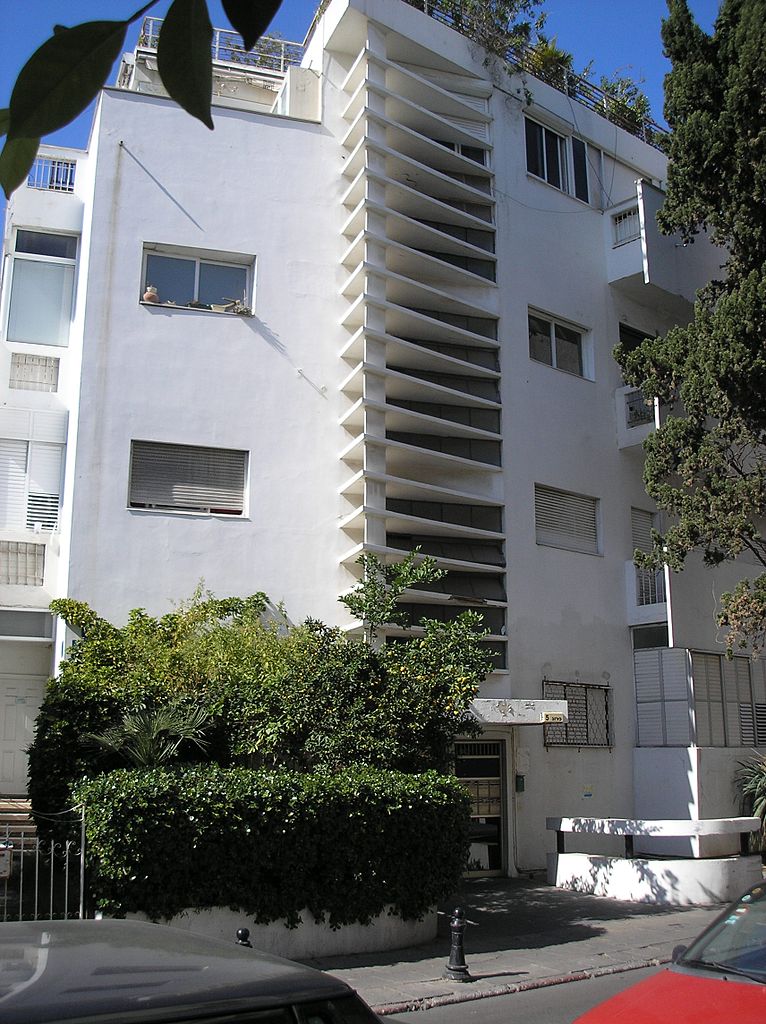 Thermometer House (1933-36), by Yehuda Lulka, Tel Aviv, image by deror avi via Wikimedia Commons
Thermometer House (1933-36), by Yehuda Lulka, Tel Aviv, image by deror avi via Wikimedia Commons
Adapted to the significantly warmer Middle-Eastern climate, the Bauhaus architecture of Tel Aviv featured a significant reduction in the surface area given to windows, which themselves were sunk into the exterior walls to reduce the amount of sunlight and heat allowed to enter the structures. In addition to this, balconies were made to stack upon one another, in an effort to make the most of the nearby ocean breezes while providing the most shade possible. Already common to Bauhaus, the inclusion of stark, white exteriors perfectly suited the climate, as it is best able to reflect sunlight and heat.
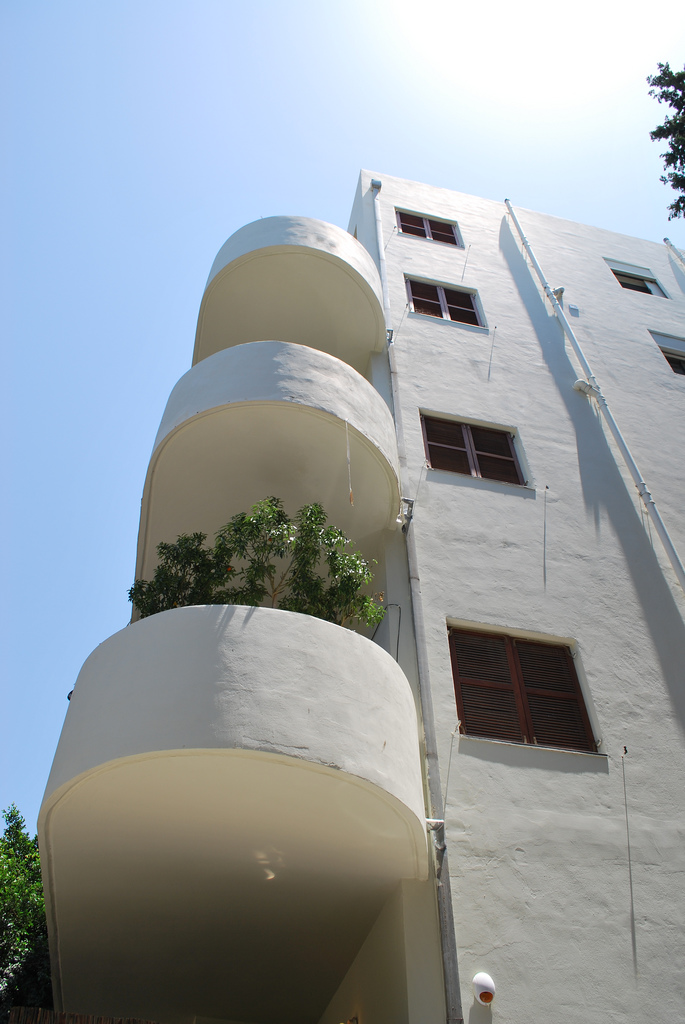 Small windows, and stacked balconies on a typical Tel Aviv Bauhaus structure, image by Flickr user stttijn via Creative Commons
Small windows, and stacked balconies on a typical Tel Aviv Bauhaus structure, image by Flickr user stttijn via Creative Commons
In total, more than 4000 Bauhaus-styled homes, apartment towers, offices, hotels, and other structures were built in Tel Aviv throughout the 1930s, 40s, and 50s. The city centre today offers the largest collection of Bauhaus architecture in the world. In 1984, as a part of Tel Aviv's 75th year, an exhibition was held at the Tel Aviv Museum of Art entitled White City, International Style Architecture in Israel, Portrait of an Era. One of the first significant references to "The White City," the exhibit showcased Tel Aviv's strong Bauhaus roots, and the recognition gained from the occasion helped to boost its public profile. The entire area — by then largely falling into disrepair — was listed by the World Monuments Fund as an endangered site, and then included on UNESCO's list of World Heritage Sites in 2003, thus cementing its status as an internationally recognized historic district and unique urban space.
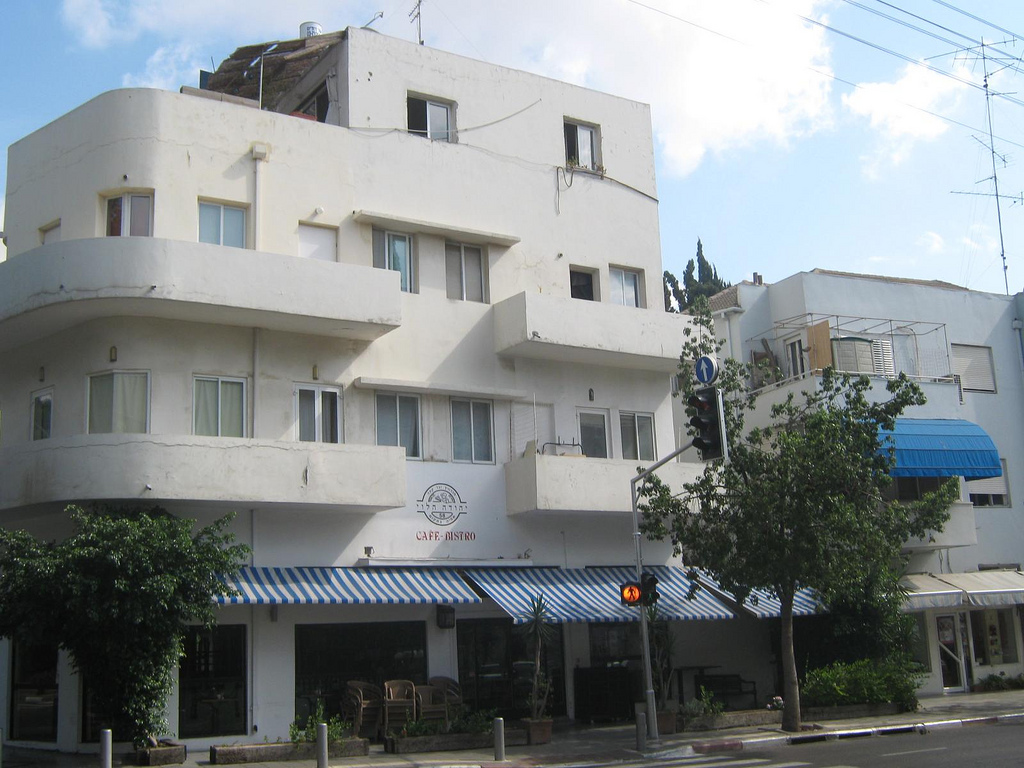 Tel Aviv Bauhaus structure, image by Flickr user Neal Ungerleider via Creative Commons
Tel Aviv Bauhaus structure, image by Flickr user Neal Ungerleider via Creative Commons
Over the last decade, a major rehabilitation and restoration project has taken hold within the White City, with efforts now underway to save a significant portion of the original collection of 4000 structures. Of the historic structures deemed worth saving, a full 1500 will likely be brought back to their former glory, with the remaining 2500 either too far gone or lacking sufficient architectural character to make the final cut. In 2015, in a gesture hailed among many as one of gracious good will, the German government committed €3.2 million over ten years to go directly to the preservation and restoration of the White City, along with the creation of a permanent home for the Bauhaus Centre. Having come full circle, albeit through an often circuitous, complicated route, Germany has once again positioned itself as a champion of the Bauhaus movement it began, the complex legacy living on within its adoptive homeland along the Mediterranean Sea.
For more Tel Aviv coverage check out the associated City page, and as always, feel free to join the conversation in the comments section below. Cityscape will return soon with a new installment, and in the meantime, SkyriseCities welcomes new suggestions for additional cities and styles to cover in the weeks to come.

 4.7K
4.7K 
















